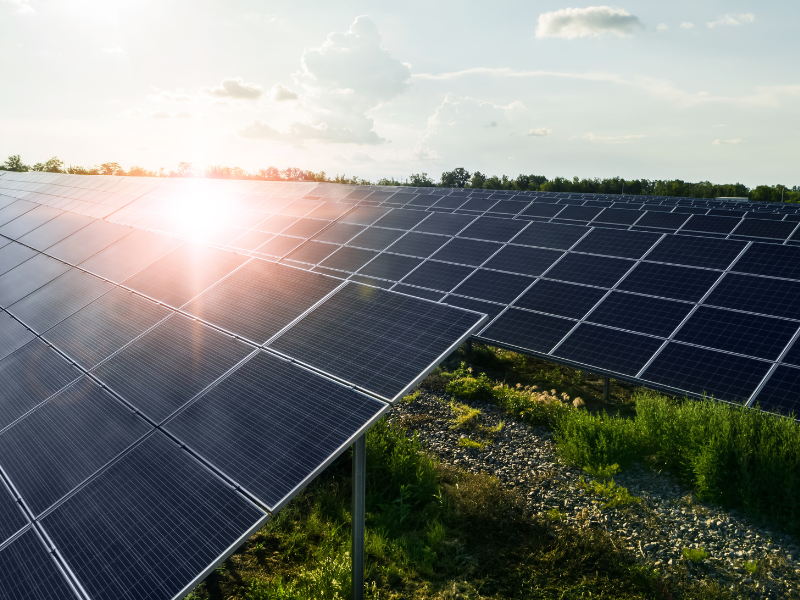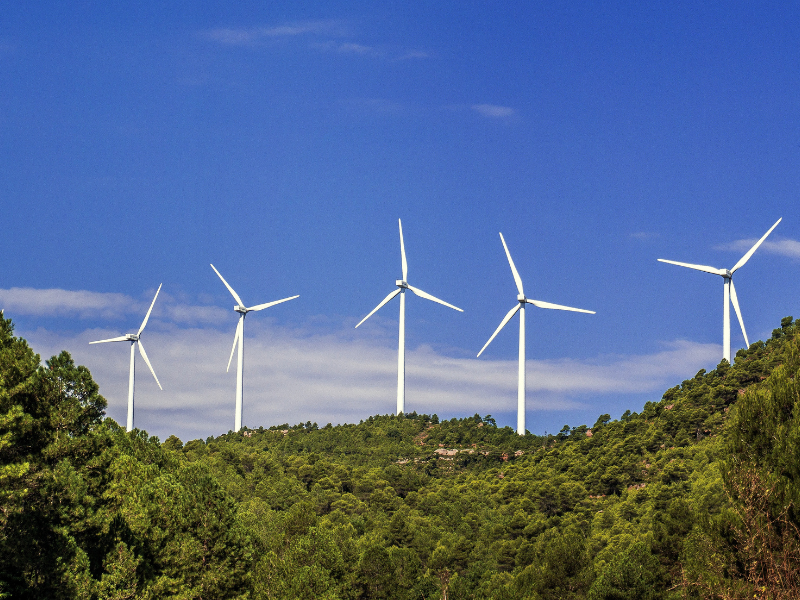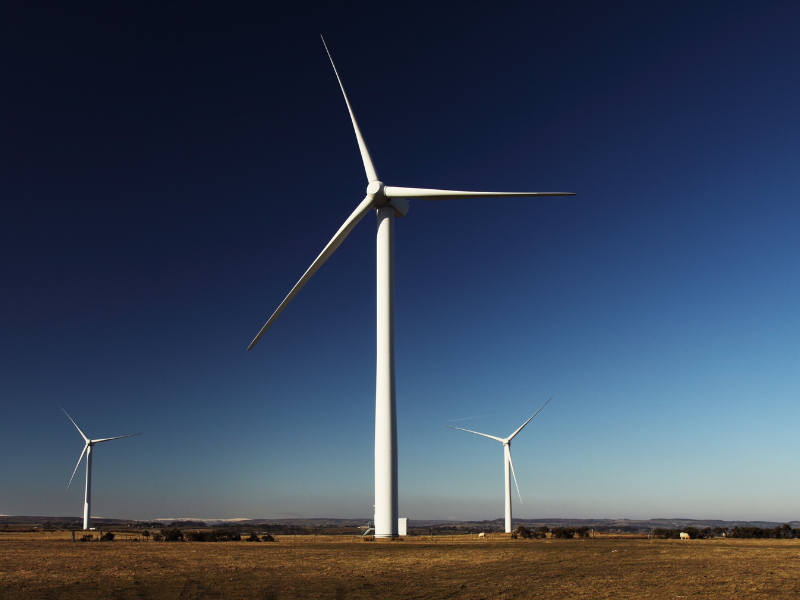In today’s rapidly evolving world, the benefits of using clean energy sources cannot be overstated. As we face the challenges posed by climate change, pollution, and depleting fossil fuel reserves, transitioning to renewable and non-polluting energy sources has become a global imperative. Clean energy sources, such as solar, wind, hydroelectric, geothermal, and biomass energy, offer a sustainable and environmentally responsible alternative to traditional carbon-intensive energy production.
This comprehensive article explores the various benefits of using clean energy sources, ranging from environmental and economic advantages to improvements in public health and social well-being. We will delve deep into the positive impacts of clean energy on our planet and society, highlighting the technological advancements, government policies, and future outlook associated with renewable energy adoption. Let us embark on this enlightening journey to understand the myriad benefits that clean energy sources bring to our lives.
The Importance of Clean Energy Sources

Clean energy sources have gained unprecedented importance due to the urgent need to mitigate the adverse effects of climate change. The burning of fossil fuels for energy generation contributes significantly to greenhouse gas emissions, leading to global warming and its associated ramifications. Adopting clean energy sources is vital not only to combat climate change but also to secure a sustainable future for generations to come.
Renewable energy, derived from naturally replenished sources, offers a solution that is both environmentally friendly and economically viable. By harnessing the power of the sun, wind, water, earth, and organic matter, clean energy sources provide a limitless and abundant supply of energy without depleting finite resources or releasing harmful pollutants. Let us explore these renewable energy sources in detail.
Renewable Energy Sources: An Overview

Solar Energy
Solar energy, harnessed through the use of photovoltaic (PV) panels and solar thermal systems, is one of the most abundant and widely accessible clean energy sources. The sun, a perpetual source of light and heat, offers an immense potential for power generation. Solar panels convert sunlight directly into electricity, while solar thermal systems utilize the sun’s heat to generate electricity or produce hot water for various applications.
The benefits of solar energy are multifaceted. Firstly, it is a clean and renewable energy source that does not emit greenhouse gases during operation. Secondly, solar power reduces dependence on fossil fuels, contributing to energy security and sustainable development. Furthermore, solar energy systems can be installed at various scales, ranging from individual households to large-scale solar farms, making it accessible to all. Additionally, solar energy creates job opportunities and encourages technological advancements in the field of renewable energy.
Wind Energy
Wind energy harnesses the power of the wind to generate electricity through wind turbines. As the wind blows, it spins the turbine’s blades, converting kinetic energy into electrical energy. Wind power has emerged as a significant player in clean energy, with large-scale wind farms becoming a common sight across the globe.
The advantages of wind energy are manifold. Firstly, it is a clean and renewable energy source that does not produce harmful emissions or pollutants. Wind farms can be installed on a variety of terrains, including onshore and offshore locations, maximizing the utilization of wind resources. Additionally, wind energy diversifies the energy mix, reducing dependence on fossil fuels and enhancing energy security. Furthermore, wind power presents economic opportunities through job creation, manufacturing, and construction activities in the renewable energy sector.
Hydroelectric Power
Hydroelectric power harnesses the potential energy of flowing or falling water to generate electricity. It utilizes the force of water, captured through dams or run-of-river systems, to turn turbines and produce electricity. Hydroelectric power is one of the oldest and most widely used renewable energy sources, accounting for a significant portion of global electricity generation.
The benefits of hydroelectric power extend beyond its renewable nature. Firstly, it is a clean and carbon-free energy source that significantly reduces greenhouse gas emissions compared to fossil fuel-based power generation. Secondly, hydroelectric power provides a reliable and stable energy supply, enabling the integration of intermittent renewable energy sources into the grid. Additionally, large-scale hydroelectric projects have multiple benefits, including flood control, irrigation, and recreational opportunities.
Geothermal Energy
Geothermal energy harnesses the heat stored beneath the Earth’s surface to generate electricity or provide direct heating and cooling. It utilizes the natural heat from the Earth’s core, accessed through geothermal power plants or geothermal heat pumps, to produce clean and sustainable energy.
The advantages of geothermal energy are diverse. Firstly, it is a clean and renewable energy source that produces minimal greenhouse gas emissions during operation. Geothermal power plants have a small physical footprint, minimizing the impact on land resources. Moreover, geothermal energy provides a consistent and reliable energy supply, unaffected by external factors such as weather or daylight availability. Furthermore, geothermal heat pumps offer a cost-effective and energy-efficient solution for heating and cooling buildings.
Biomass Energy
Biomass energy utilizes organic matter, such as plant material and agricultural residues, to produce heat, electricity, or biofuels. Biomass can be combusted directly, converted into biogas through anaerobic digestion, or processed into liquid biofuels through advanced technologies.
The benefits of biomass energy are wide-ranging. Firstly, it is a clean and renewable energy source that contributes to mitigating greenhouse gas emissions. Biomass can be manufactured from various waste materials, providing an opportunity for waste management and resource recovery. Additionally, biomass energy can be utilized in decentralized systems, promoting energy access in rural areas and reducing dependence on centralized power grids. Furthermore, the biofuel industry stimulates agricultural activities and creates employment opportunities in rural communities.
Environmental Benefits of Using Clean Energy Sources

The transition to clean energy sources brings numerous environmental benefits, addressing the pressing issues of climate change, air pollution, water conservation, and preservation of natural ecosystems. Let us explore these benefits in detail.
Reduction in Greenhouse Gas Emissions
Clean energy sources play a pivotal role in reducing greenhouse gas emissions, which are primarily responsible for global warming and climate change. Fossil fuel combustion releases significant amounts of carbon dioxide (CO2), methane (CH4), and nitrous oxide (N2O) into the atmosphere, trapping heat and altering the Earth’s climate system.
By relying on renewable energy sources that do not emit or have minimal greenhouse gas emissions, we can effectively reduce the carbon footprint associated with energy generation. Solar, wind, hydroelectric, geothermal, and biomass energy offer a carbon-neutral or carbon-negative alternative, significantly mitigating the detrimental effects of greenhouse gas emissions.
According to the Intergovernmental Panel on Climate Change (IPCC), transitioning to clean energy sources is crucial to limit global warming to well below 2 degrees Celsius compared to pre-industrial levels. By embracing renewable energy technologies, we can curb the escalating climate crisis and protect the delicate balance of our planet’s ecosystems.
Air Quality Improvement
One of the immediate and tangible benefits of using clean energy sources is the improvement in air quality. Traditional energy production heavily relies on fossil fuels, releasing harmful pollutants and particulate matter into the atmosphere. This leads to poor air quality, smog formation, and a wide array of respiratory and cardiovascular diseases.
Clean energy sources, particularly solar, wind, and hydroelectric power, produce electricity without emitting harmful pollutants. By reducing our dependence on fossil fuels, we can mitigate air pollution and create a healthier living environment for ourselves and future generations. The World Health Organization (WHO) estimates that over 4 million premature deaths each year can be attributed to air pollution. Transitioning to clean energy is not only an environmental imperative but also a matter of public health and well-being.
Conservation of Water Resources
Clean energy sources offer significant advantages in terms of water conservation and sustainable water management. Traditional energy generation methods, such as coal-fired power plants and nuclear reactors, require enormous amounts of water for cooling and steam generation. This puts immense strain on water resources, especially in regions facing water scarcity or drought conditions.
Renewable energy sources, such as wind, solar, and geothermal energy, have minimal water requirements and do not consume or contaminate vast quantities of water. This reduces the strain on local ecosystems, protects aquatic habitats, and conserves water for other essential purposes, such as agriculture and drinking water supply. Additionally, hydroelectric power plants can be designed to incorporate water management techniques, ensuring efficient use and preserving the ecological balance of river systems.
Preservation of Natural Habitats
Unsustainable energy production often leads to habitat destruction and loss of biodiversity. The extraction, mining, and transportation of fossil fuels result in deforestation, land degradation, and disruption of delicate ecosystems. Oil spills, coal ash disposal, and nuclear accidents further exacerbate the damage, posing a severe threat to flora and fauna.
Clean energy sources provide a viable alternative that minimizes the environmental footprint and protects natural habitats. Solar panels can be installed on rooftops and non-arable land without damaging ecosystems. Wind turbines can coexist with agricultural activities, ensuring land use optimization. Furthermore, geothermal energy and biomass production can be integrated into existing agricultural systems, promoting sustainable land management practices. By embracing clean energy, we can preserve precious biodiversity hotspots, protect endangered species, and maintain the delicate balance of our ecosystems.
Limiting Acid Rain and Pollution
Acid rain, a detrimental consequence of burning fossil fuels, damages ecosystems, corrodes buildings, and contaminates water bodies. Sulphur dioxide (SO2) and nitrogen oxides (NOx) released from coal-fired power plants and other industrial activities combine with atmospheric moisture to form acidic compounds, which are then deposited through rainfall.
By transitioning to clean energy sources, we can significantly reduce the production of harmful pollutants responsible for acid rain formation. Solar, wind, hydroelectric, and geothermal energy systems produce electricity without emitting sulphur or nitrogen compounds, thereby limiting acid rain and its cascading effects on the environment. This helps in preserving soil quality, protecting aquatic life, and ensuring the longevity of infrastructure.
Economic Benefits of Using Clean Energy Sources
The adoption of clean energy sources is not only environmentally responsible but also economically advantageous. Let us explore the economic benefits associated with the utilization of renewable energy.
Job Creation and Economic Growth

Clean energy technologies have the potential to revolutionize the job market and drive economic growth. The rapid expansion of renewable energy industries, including solar and wind power, has created millions of jobs worldwide. These jobs span a wide range of sectors, from manufacturing and installation to operations and maintenance.
According to the International Renewable Energy Agency (IRENA), the renewable energy sector employed 11.5 million people globally in 2019, a significant increase from previous years. By investing in clean energy sources, governments and businesses can stimulate employment opportunities, particularly in regions transitioning from traditional industries. This diversifies the economy, enhances human capital, and supports sustainable development.
Reduced Dependence on Foreign Energy Sources
Reliance on imported fossil fuels often exposes economies to geopolitical risks, market fluctuations, and supply disruptions. Clean energy sources offer a chance to reduce dependence on foreign energy sources, enhancing energy security and stability.
By developing domestic renewable energy infrastructure, countries can tap into their own resources, reducing the need for expensive imports and mitigating exposure to volatile global energy markets. This not only ensures a stable supply of electricity but also promotes national self-sufficiency and reduces trade deficits. Additionally, investing in clean energy technologies stimulates domestic industries, fostering innovation, and attracting investments in local manufacturing and research and development.
Cost Savings and Stable Energy Prices
Contrary to popular belief, clean energy sources are becoming increasingly cost-competitive with traditional fossil fuel-based power generation. The declining cost of renewable energy technologies, coupled with economies of scale and technological advancements, has significantly reduced the price of clean energy systems.
Solar photovoltaic (PV) modules, for instance, have witnessed a dramatic reduction in costs over the past decade, making them more accessible and affordable. Wind energy has also experienced the downward trend in costs, driven by advancements in wind turbine design and manufacturing processes.
Moreover, clean energy sources offer advantages in terms of stable energy prices. While fossil fuel prices are subject to volatile market dynamics and geopolitical factors, renewable energy systems provide a predictable and stable source of electricity. This enables businesses, households, and governments to plan their energy budgets effectively, reducing vulnerability to price fluctuations and ensuring long-term financial sustainability.
Health Benefits of Using Clean Energy Sources
The adoption of clean energy sources goes hand in hand with significant health benefits, leading to improved quality of life and reduced healthcare costs. Let us explore the positive impact of clean energy on public health.
Decreased Respiratory and Cardiovascular Diseases
Air pollution, resulting from the burning of fossil fuels for energy generation, has profound implications for respiratory and cardiovascular health. Fine particulate matter (PM2.5), volatile organic compounds (VOCs), nitrogen oxides (NOx), and other pollutants released during the combustion process adversely affect lung function, exacerbate respiratory conditions, and contribute to the development of chronic diseases.
By transitioning to clean energy sources, we can significantly reduce air pollution, thereby improving respiratory and cardiovascular health outcomes. Solar and wind energy systems produce electricity without emitting harmful pollutants, leading to cleaner air and a decrease in the incidence of respiratory diseases such as asthma and chronic obstructive pulmonary disease (COPD). The reduction in air pollution also lowers the risk of cardiovascular diseases, including heart attacks, strokes, and hypertension.
Improved Indoor Air Quality
Indoor air quality plays a crucial role in maintaining a healthy living environment. Traditional heating and cooking practices, particularly in low-income households in developing countries, often rely on solid fuels such as wood, coal, or biomass. The combustion of these fuels within confined spaces leads to the release of harmful pollutants, including carbon monoxide (CO), nitrogen dioxide (NO2), and volatile organic compounds (VOCs).
The transition to clean energy sources, such as clean cooking technologies and cleaner fuels, significantly improves indoor air quality. Electric cooking appliances, induction cooktops, and energy-efficient stoves eliminate the need for solid fuels, reducing exposure to toxic emissions. This leads to a decrease in respiratory and pulmonary ailments, especially among women and children, who are disproportionately affected by indoor air pollution.
Reduced Noise Pollution
Clean energy sources, such as solar and wind power, offer an additional benefit in terms of reduced noise pollution. Traditional power generation methods, such as fossil fuel-based power plants or diesel generators, are often accompanied by noise emissions that can disrupt nearby communities and cause noise-induced stress and health problems.
In contrast, solar panels operate silently, without any mechanical or moving components that generate noise. Wind turbines, although they do produce some noise, are designed to minimize the impact on surrounding areas through advanced aerodynamics and noise-canceling technologies. Thus, the proliferation of clean energy sources contributes to a quieter and more peaceful living environment, promoting mental well-being and reducing the risk of noise-related health issues.
Social Benefits of Using Clean Energy Sources
Clean energy sources bring about transformative social benefits, promoting inclusive development, energy access, community empowerment, and education. Let us explore these advantages in detail.
Energy Access and Poverty Alleviation
Access to energy is a fundamental human right, vital for socio-economic development and poverty alleviation. Clean energy sources offer a viable solution to address energy poverty, particularly in rural areas and developing regions where electricity is scarce or absent.
By decentralizing energy production and adopting off-grid or mini-grid solutions powered by renewable energy sources, communities can gain access to reliable and clean electricity. This has a cascading effect, enabling improved healthcare, education, communication, and economic opportunities. Furthermore, clean energy technologies, such as solar lanterns and bioenergy solutions, provide affordable and sustainable alternatives to traditional fuels, empowering individuals and households to break out of the cycle of energy poverty.
Energy Independence
Clean energy sources pave the way for energy independence, reducing the reliance on centralized power grids and empowering individuals and communities to take control of their energy needs. Through the installation of rooftop solar panels, wind turbines, or small-scale hydroelectric systems, households and businesses can generate their own electricity, becoming prosumers rather than mere consumers.
Energy independence leads to resilience and stability, particularly during periods of grid outages, natural disasters, or political unrest. It offers greater control over energy costs and promotes self-sufficiency, ensuring that essential services and critical infrastructure remain powered in times of crisis. Additionally, energy independence fosters a sense of empowerment, encouraging individuals and communities to actively participate in the energy transition and take ownership of their sustainable future.
Community Empowerment and Engagement
The transition to clean energy sources fosters community empowerment and engagement, encouraging active participation and collaboration in energy-related decision-making processes. Community-led renewable energy projects, such as cooperative solar installations or wind farms, enable residents to collectively invest, own, and benefit from clean energy initiatives.
By establishing community energy cooperatives or microgrids, local stakeholders gain a sense of ownership and control over their energy resources. This leads to increased community cohesion, economic opportunities, and social well-being. Furthermore, community-led initiatives create spaces for knowledge-sharing, capacity building, and awareness raising, empowering individuals to actively contribute to the sustainability and resilience of their communities.
Education and Awareness
The adoption of clean energy sources necessitates a widespread dissemination of knowledge, awareness, and education. By promoting clean energy literacy and environmental consciousness from an early age, we can create a generation of environmentally responsible citizens.
Schools, colleges, and universities play a crucial role in integrating renewable energy education into their curriculum, empowering students with the knowledge and skills necessary to build a sustainable future. Educational campaigns, public awareness programs, and community events can also raise awareness about the benefits of clean energy sources, encouraging behavioral change and promoting sustainable consumption and lifestyle choices.
Furthermore, clean energy projects often require skilled professionals, scientists, engineers, and technicians. By investing in quality education and vocational training programs focused on renewable energy, countries can develop a highly skilled workforce capable of driving the clean energy revolution and spearheading technological advancements.
Technological Advancements in Clean Energy
The rapid progress in clean energy technologies has paved the way for innovative solutions and exciting advancements in the field. Let us explore some of the cutting-edge technologies shaping the clean energy landscape.
Energy Storage Solutions
Energy storage is a critical enabler for the integration of intermittent renewable energy sources into the grid. With the increasing penetration of solar and wind power, there is a growing need to store excess energy when generation is high and discharge it during periods of low generation.
Technological advancements in battery storage, such as lithium-ion batteries and flow batteries, have revolutionized the energy storage sector. Energy storage systems not only provide grid stability but also facilitate the transition towards a decentralized and resilient energy system.
Smart Grids
Smart grids integrate advanced communication, control, and automation technologies with the electricity grid, enabling efficient and intelligent management of energy resources. These grids facilitate the bi-directional flow of electricity, seamless integration of decentralized energy sources, and demand-side management.
By leveraging real-time data, smart grids optimize energy distribution, reduce grid losses, and enhance reliability. They also facilitate the integration of electric vehicle charging infrastructure, demand response programs, and other demand-side management initiatives. Smart grids pave the way for a more efficient, flexible, and responsive electricity grid, ensuring a smooth transition to clean energy sources.
Electric Vehicles
Electric vehicles (EVs) are revolutionizing the transportation sector, reducing dependence on fossil fuel-powered automobiles and promoting sustainable and clean mobility solutions. EVs are powered by electricity stored in rechargeable batteries, eliminating tailpipe emissions and significantly reducing carbon dioxide emissions compared to internal combustion engine vehicles.
The widespread adoption of EVs not only reduces greenhouse gas emissions but also improves air quality, particularly in densely populated urban areas. Additionally, the integration of EVs with renewable energy sources enables the concept of vehicle-to-grid (V2G) technology, where EVs can act as mobile storage units, contributing to the overall stability and resilience of the grid.
Internet of Things (IoT) Integration
The Internet of Things (IoT) has revolutionized the energy sector, enabling the seamless integration of devices, systems, and renewable energy sources. IoT technologies offer real-time data collection, analysis, and control capabilities, enhancing the efficiency and monitoring of clean energy systems.
By using IoT-enabled devices, homeowners can remotely monitor and control their solar panels, wind turbines, or energy storage systems, optimizing generation and consumption patterns. Similarly, IoT integration in smart grids enables real-time data exchange, demand-side management, and predictive analytics, ensuring the efficient utilization of clean energy resources.
Government Policies and Initiatives
Government policies and initiatives play a crucial role in promoting the adoption of clean energy sources and driving the transition towards a sustainable energy future. Let us explore some of the key policy measures and incentives implemented worldwide.
Renewable Portfolio Standards (RPS)
Renewable Portfolio Standards (RPS), also known as Renewable Energy Standards (RES), are regulatory mechanisms that mandate the percentage of electricity generation derived from renewable sources. These standards typically require utilities and energy providers to procure a certain portion of their electricity from clean energy sources.
RPS policies provide a strong market signal, incentivizing investment in renewable energy projects and ensuring a gradual transition towards a sustainable energy mix. By setting specific targets and compliance deadlines, governments encourage the development of clean energy infrastructure, stimulate job creation, and reduce greenhouse gas emissions.
Feed-in Tariffs (FiTs)
Feed-in Tariffs (FiTs) are policy mechanisms that guarantee a fixed payment for each unit of clean electricity generated by renewable energy systems. These tariffs are typically higher than the market price of electricity, ensuring a favorable return on investment for renewable energy projects.
FiTs encourage the rapid deployment of renewable energy technologies, providing long-term price stability, and reducing the perceived risk associated with clean energy investments. By offering attractive financial incentives, governments attract private investors, drive technological advancements, and accelerate the adoption of clean energy sources.
Tax Incentives and Grants
Tax incentives and grants are crucial policy tools used by governments to promote the adoption of clean energy sources. These incentives take the form of tax credits, rebates, grants, or loans, encouraging individuals, businesses, and industries to invest in renewable energy technologies.
By reducing the financial burden associated with clean energy investments, tax incentives and grants stimulate economic growth, create job opportunities, and attract private sector involvement. They also facilitate the deployment of innovative technologies, research and development activities, and market penetration of clean energy solutions.
International Agreements and Targets
International agreements and targets, such as the Paris Agreement and the United Nations Sustainable Development Goals (SDGs), provide a global framework for climate action and sustainable development. These agreements commit nations to limit global warming, achieve carbon neutrality, and transition to clean energy sources.
By endorsing international agreements and participating in global collaborations, governments send a strong signal of their commitment to the clean energy transition. They facilitate knowledge exchange, technology transfer, and financial support for developing countries, ensuring a collective effort towards a sustainable and resilient future.
Challenges and Future Outlook
Despite the numerous benefits of using clean energy sources, several challenges impede the widespread adoption and penetration of renewable energy technologies. Let us explore some of the key challenges and the future outlook for clean energy.
Integration and Grid Stability
As the share of intermittent renewable energy sources in the electricity grid increases, the challenge of integrating these variable sources becomes apparent. Solar and wind power generation depends on weather conditions, leading to fluctuations in electricity supply and grid stability.
To address this challenge, advancements in energy storage technologies are crucial. Energy storage systems, such as batteries, pumped hydro storage, and thermal energy storage, play a key role in balancing supply and demand, ensuring grid stability, and enabling the efficient utilization of clean energy resources. Smart grid technologies and demand-side management initiatives also contribute to grid stability, facilitating the seamless integration of renewable energy sources.
Cost Competitiveness
While clean energy sources have become increasingly cost-competitive, they still face challenges in terms of upfront costs and price parity with traditional fossil fuel-based energy generation. The initial investment required for renewable energy projects, such as solar or wind power plants, can be substantial, particularly for developing countries or regions with limited financial resources.
However, declining costs, advances in technology, and economies of scale are driving down the overall cost of clean energy systems. Additionally, favorable policy frameworks, such as tax incentives or feed-in tariffs, can help bridge the cost gap and accelerate the adoption of renewable energy technologies.
Public Acceptance and Opposition
The transition to clean energy sources often faces opposition and challenges from various stakeholders, including communities, industries, and policymakers. Concerns related to visual impact, land use, noise pollution, and perceived economic impacts can lead to public resistance and delays in project implementation.
To address these concerns, effective communication, community engagement, and stakeholder involvement are crucial. Transparent and inclusive decision-making processes, combined with public awareness campaigns and educational programs, can help overcome opposition and ensure a smooth transition to clean energy.
Research and Development
Continued research and development efforts are essential to overcome technical, economic, and social barriers associated with clean energy sources. Innovations in materials science, engineering, and manufacturing processes can lead to the development of more efficient and cost-effective renewable energy technologies.
Public and private sector investments in research and development help drive the clean energy revolution, accelerate technology commercialization, and foster collaborations between academia, industry, and government. By facilitating knowledge sharing, breakthrough discoveries, and advancements in clean energy technologies, research and development lay the foundation for a sustainable and prosperous future.
Frequently Asked Questions (FAQs)
How do clean energy sources help combat climate change?
Clean energy sources, such as solar, wind, hydroelectric, geothermal, and biomass energy, help combat climate change by reducing greenhouse gas emissions. These renewable energy sources do not release carbon dioxide and other harmful pollutants during operation, making them a carbon-neutral or carbon-negative alternative to fossil fuel-based power generation. By transitioning to clean energy, we can significantly reduce the carbon footprint associated with energy production and mitigate the adverse effects of climate change.
Are clean energy sources economically viable?
Clean energy sources have become increasingly cost-competitive with traditional fossil fuel-based energy generation. The declining cost of renewable energy technologies, coupled with economies of scale and favorable policies, has made clean energy economically viable in many regions. Solar and wind power, in particular, have witnessed significant cost reductions over the past decade, making them attractive and financially sustainable options for electricity generation.
What are the health benefits of transitioning to clean energy?
Transitioning to clean energy sources brings about significant health benefits. By reducing air pollution and eliminating harmful emissions associated with fossil fuel combustion, clean energy helps improve respiratory and cardiovascular health. Cleaner air quality leads to a decrease in the incidence of respiratory diseases, such as asthma and chronic obstructive pulmonary disease (COPD), as well as a reduction in cardiovascular ailments, including heart attacks and strokes. Additionally, clean energy contributes to improved indoor air quality, particularly in households using clean cooking technologies, reducing the risk of respiratory ailments caused by indoor air pollution.
What role do governments play in promoting clean energy?
Governments play a crucial role in promoting clean energy adoption through policy measures and initiatives. They formulate and implement renewable energy standards, provide financial incentives such as tax credits and grants, and commit to international agreements and targets. Governments also invest in research and development, facilitate knowledge exchange, and create favorable regulatory frameworks that encourage private sector involvement in clean energy projects. By establishing supportive policies and regulations, governments drive the transition towards sustainable and clean energy sources, ensuring a resilient and environmentally responsible future.
Conclusion
The benefits of using clean energy sources are vast and far-reaching, touching upon all aspects of our society, economy, and environment. From reducing greenhouse gas emissions and improving air quality to fostering economic growth and empowering communities, clean energy offers an unparalleled opportunity for a sustainable and inclusive future.
By harnessing the power of solar, wind, hydroelectric, geothermal, and biomass energy, we can address the challenges posed by climate change, pollution, and finite fossil fuel reserves. Technological advancements in energy storage, smart grids, and electric vehicles further propel the clean energy revolution, enabling us to create a decentralized, resilient, and sustainable energy system.
Governments, policymakers, businesses, and individuals must collaborate and commit to transitioning to clean energy sources. By embracing renewable energy technologies, we can mitigate the detrimental effects of climate change, improve public health, create job opportunities, and achieve a harmonious coexistence with nature.
The time to act is now. Let us seize the benefits of using clean energy sources and shape a future that is not only environmentally responsible but also economically viable and socially just. Together, we can create a world powered by clean energy, where the benefits of a sustainable and resilient future are realized by all.




